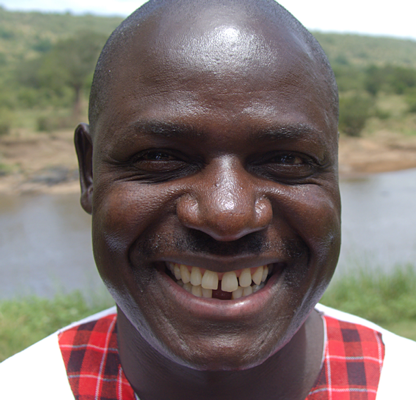Dental research results: Infant oral mutilation is still a frequent practice in the Maasai community, Mara North Conservancy
Main conclusions from a scientific report on the prevalence and impact of infant oral mutilation (abbreviated as IOM) on dental occlusion and oral health-related quality of life, published in the international journal, BMC Oral Health.

You can tell that it is a maasai by looking at his smile. For many years, a traditional tribe mark has been the two missing teeth in the lower jaw. Recently, a scientific report on the prevalence and impact of infant oral mutilation (abbreviated as IOM) on dental occlusion and oral health-related quality of life was published in the international journal, BMC Oral Health.
The main conclusions of the research project are:
Approximately 2/3 parts of the 284 adolescents (14-18 years of age) participating in the project had been exposed to infant oral mutilation (IOM), meaning that primary and/or permanent tooth buds/teeth in the frontal segment of the dentition had been taken out at an early age.
The vast majority of the teeth taken out as IOM early in life was front teeth in the lower jaw.
More individuals in the IOM group had maxillary overbite exceeding 5 mm than in the group
of adolescents not exposed to IOM.
Significantly more adolescents (11%) of the IOM group had deviation from neutral occlusion,
called mesial occlusion, than adolescents in the control group (p<0.001).
Despite IOM and impact on dental occlusion, only few expressed substantial effect on oral-
health-related quality of life.
The traditional practice, called IOM, performed in the young Maasai population as removal of tooth bud(s) of the developing primary and/or permanent front teeth in the lower jaw (also known as mandibular incisors and/or canines), or early extraction of these tooth types is still very common in Maasai Mara, Kenya. The most dominant type of IOM is extraction of the two central front teeth in the lower jaw. The consequence is apparently minimal in relation to the dental occlusion and oral health-related quality of life, when only central incisors in the lower jaw are involved. However, some adolescents are more heavily affected than others are, for example, when IOM towards more than two teeth are performed or when canines in the lower jaw are removed or damaged. Hence, there is still a need for oral health education to the Kenyan communities to increase the understanding of the possible long-term effects of the IOM practice.
The research results will be presented at the IAPD conference in Nairobi 18-20th of January 2019.
http://iapdregional.org/program/
Read more about oral diseases and infant oral mutilation in the population of Masai Mara.